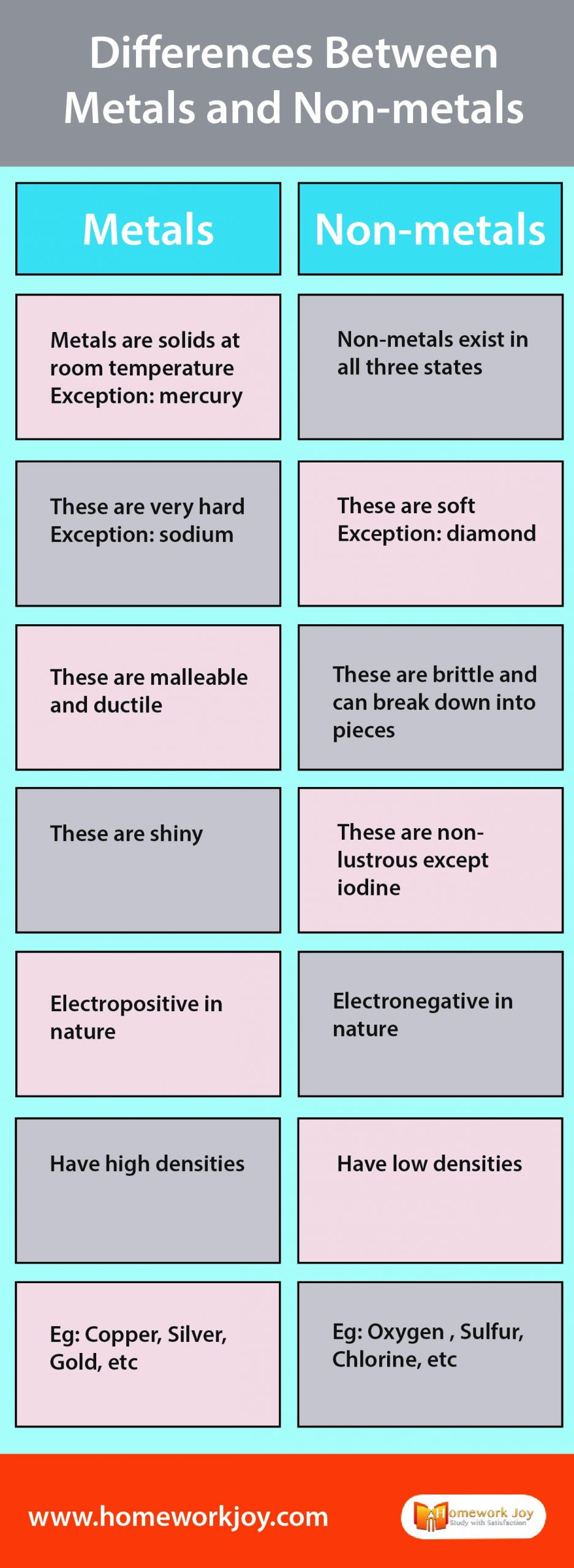When you study chemistry, you’ll come across the word metal and non-metal. In his guide, you’ll learn the differences between metals and non-metals. Out of the two, metals are substances with high electrical and thermal conductivity, malleability, ductility, and reflectivity of light. The chemical elements present in the earth’s atmosphere almost all the chemical elements are metals. The main kinds of metals found in the earth’s crust are aluminium, iron, calcium, sodium, and magnesium. Whereas, the various types of an element with dull or light physical appearance are non-metals. The various types of non-metals in the periodic table include halogens, hydrogen, oxygen, etc.
Also read:-
Physical & Chemical Properties of Metals
To help you know the term metals better, here are the few physical and chemical properties of metals.
Physical Properties
- Shiny in nature.
- Metals are good conductor of electricity and heat.
- Metals are sonorous.
- They have low electronegativity.
- Metals tend to gain valence electrons.
Chemical Properties
- Metals have high density.
- They are malleable and ductile.
- Metals tend to lose electrons.
- They have low electronegativities.
- These are good reducing agents.
Physical & Chemical Properties of Non-metals
Here are a few physical and chemical properties of non-metals that can help you know the term better.
Physical Properties
- Metals have poor conductors of electricity and heat.
- Non-metals are good insulators.
- They tend to gain electrons.
- Non-metals are non-sonorous and transparent.
- They may be solids, liquids, or gases at room temperature.
Chemical Properties
- Non-metals have 4-8 electrons in the outermost shell.
- These are great oxidizing agents.
- Non-metals are neither malleable nor ductile.
- They have a tendency to gain or lose electrons.
- Non-metals form acidic oxides in contact with oxygen.
Differences Between Metals and Non-metals
| Metals | Non-metals |
| Metals are solids at room temperature Exception: mercury | Non-metals exist in all three states |
| These are very hard
Exception: sodium |
These are soft
Exception: diamond |
| These are malleable and ductile | These are brittle and can break down into pieces |
| These are shiny | These are non-lustrous except iodine |
| Electropositive in nature | Electronegative in nature |
| Have high densities | Have low densities |
| Eg: Copper, Silver, Gold, etc | Eg: Oxygen , Sulfur, Chlorine, etc |
Positions of Metals and Non-metals in Periodic Table
In the modern periodic table, the two metals and non-metals occupy certain positions. For instance, the non-metals occupy the upper right-hand corner, including halogens, noble gases, etc. Non-metal comprises hydrogen, carbon, nitrogen, oxygen, etc. Metals are further to the left on the periodic table. Hence, they have low ionization energies and low electron affinities and tend to lose electrons easily and gain them with difficulty.
If you need more help with your chemistry-related topics, you can seek instant online assignment help from us. We have a team of professionals who can help you with any field of study. Chat with us now
